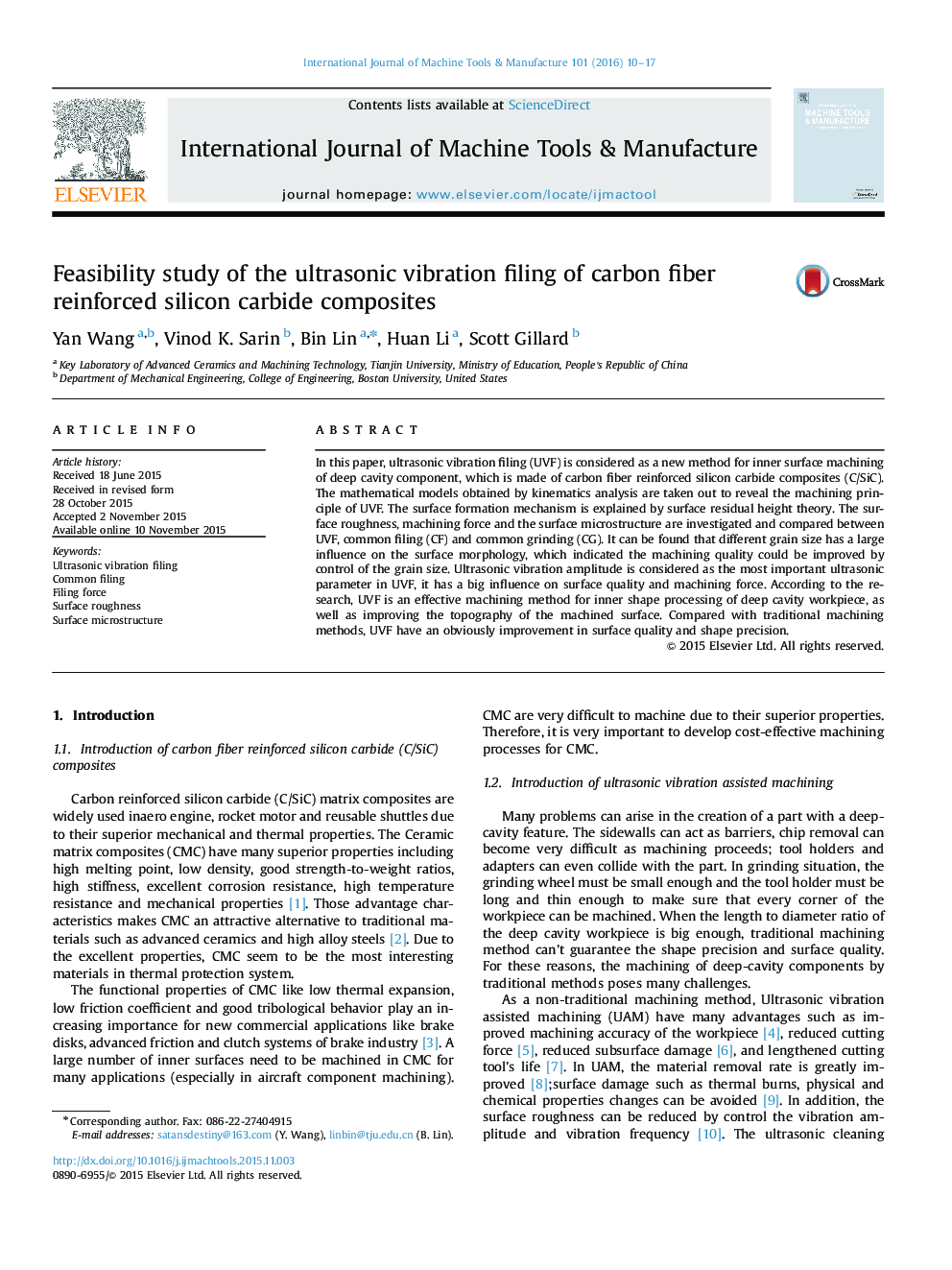| Article ID | Journal | Published Year | Pages | File Type |
|---|---|---|---|---|
| 780458 | International Journal of Machine Tools and Manufacture | 2016 | 8 Pages |
•A new method for inner shape machining is pointed out by ultrasonic vibration filing.•The mathematical models are presented to describe the machining mechanism.•The surface formation mechanism is explained by surface residual height theory.•An experiment involved in traditional machining methods is executed to validate the theoretical analysis.
In this paper, ultrasonic vibration filing (UVF) is considered as a new method for inner surface machining of deep cavity component, which is made of carbon fiber reinforced silicon carbide composites (C/SiC). The mathematical models obtained by kinematics analysis are taken out to reveal the machining principle of UVF. The surface formation mechanism is explained by surface residual height theory. The surface roughness, machining force and the surface microstructure are investigated and compared between UVF, common filing (CF) and common grinding (CG). It can be found that different grain size has a large influence on the surface morphology, which indicated the machining quality could be improved by control of the grain size. Ultrasonic vibration amplitude is considered as the most important ultrasonic parameter in UVF, it has a big influence on surface quality and machining force. According to the research, UVF is an effective machining method for inner shape processing of deep cavity workpiece, as well as improving the topography of the machined surface. Compared with traditional machining methods, UVF have an obviously improvement in surface quality and shape precision.
